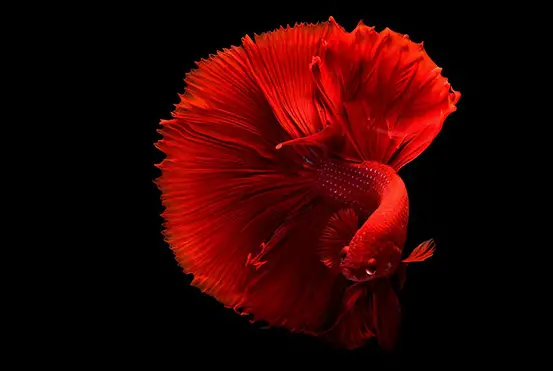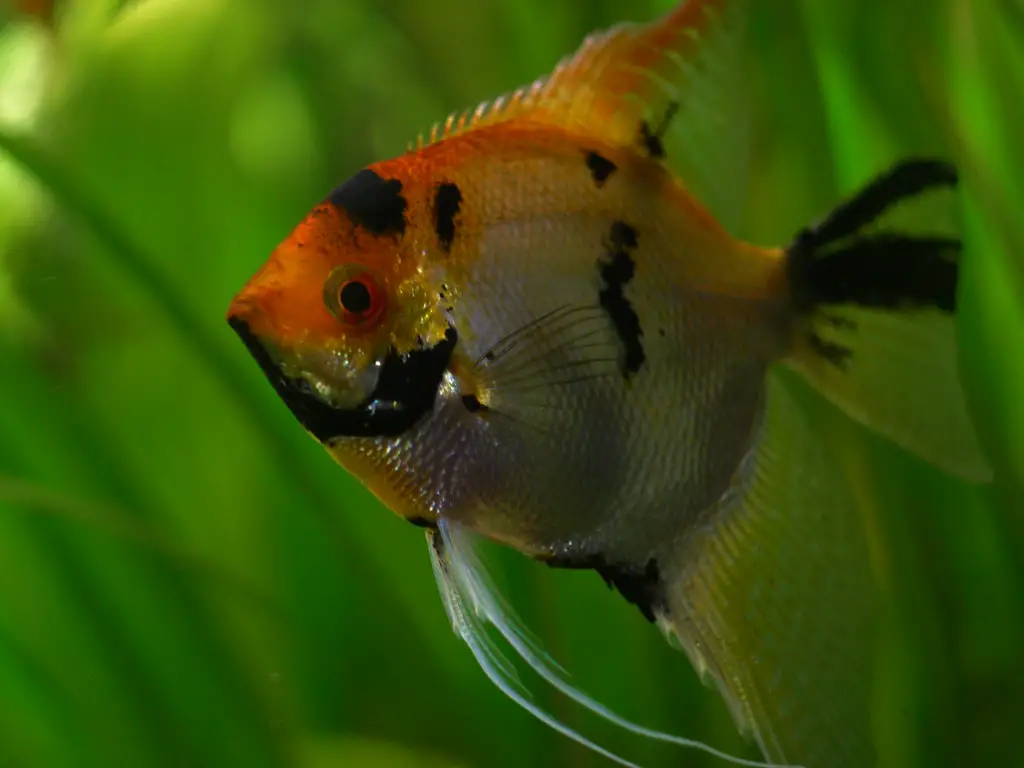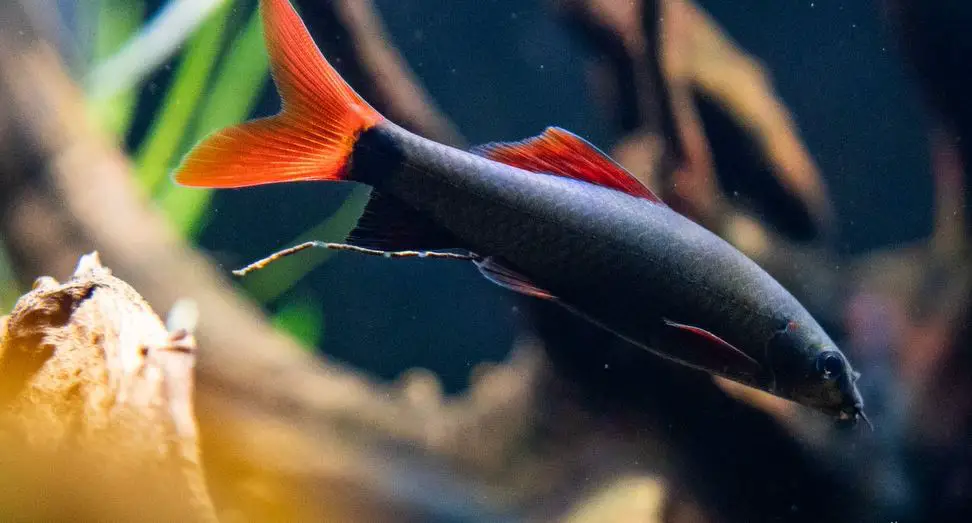Fishkeeping is a great hobby, and once you start getting the hang of it, you start experimenting with different fish species, like Angelfish. Usually, fish shows various behavior and characteristics, which we as owners have to note. One such behavior is gender change in Angelfish. Do Angelfish change gender?
No, Angelfish do not change gender. Angelfish are born as either male or female and will remain that way for their entire lives. However, a few conditions can cause an Angelfish to change its appearance. But these changes are only temporary, and the fish will eventually return to its original form.
While you are new to the angelfish and fishkeeping world, you will surely have many questions about them. Do not worry; by the end of this article, you will know everything about angelfish gender change. Let us start with the basics!
What Type Of Fish Are Angelfish?
Angelfish are freshwater fish that are popular in home aquariums. These fish are a type of cichlid known for their beautiful fins and brightly colored bodies. Angelfish come in various colors, including black, silver, gold, and blue.
Angelfish originally belonged to the Amazon River Basin in South America. However, angels can now be found worldwide in aquariums and pet stores. Generally, three species of angelfish in the cichlid family are popular in home aquariums. These are the Petrophyllum scalare, Pterophyllum altum, and Pterophyllum leopoldi.
Usually, angelfish are a popular choice for home aquariums because they are very beautiful fish with a relatively easy angelfish care regimen. In addition, these fish are generally peaceful and can be kept with other fish of similar size and temperament. So, if you want a relatively easy-to-care-for and beautiful fish, then an angelfish may be the right choice.
Do Angelfish Change Sex?
The answer is yes; Angelfish can change sex. However, it’s not something that happens frequently. It usually only occurs when the conditions are just right. This process is called sequential hermaphroditism, allowing angelfish to change their sex later in life.
Usually, marine Angelfish most often change their sex from female to male. This is because, in the wild, there are typically more females than males. This allows for a greater chance of reproduction and increases the species’ genetic diversity.
However, it is very unlikely for males to change into females, but it is possible. Usually, this would only happen if there were more males than females and the species’ survival was at stake.
While sequential hermaphroditism is not common, it’s important to remember that all angelfish have male and female reproductive organs. This means your angelfish can reproduce with any other species, regardless of sex.
Do you have any questions about angelfish or sequential hermaphroditism? Please note down your queries in the comments.
Can Angelfish Change Gender?
NO, Angelfish cannot change gender. This is a myth that the pet industry has perpetuated for many years. The truth is, angelfish are born male or female and will remain that way their entire lives. This means that if you purchase a group of juvenile Angelfish, you will have a mix of both males and females.
Usually, many people get confused because they purchase a group of juvenile Angelfish, which are all the same size. However, as the fish mature, the males will grow much larger than the females. This often leads people to believe that the smaller fish must be female and turns into males after growing larger.
Another reason this myth is so widespread is that it’s very difficult to be sexually angelfish. Even experienced aquarists often have a hard time telling males and females apart. This is because the physical differences between them are very subtle. Therefore, the best way to determine the sex of your Angelfish is by watching their behavior.
So, how can we separate male and female angelfish then??
How To Tell Male And Female Angelfish Apart?
Angelfish are a type of freshwater fish that are popular among aquarium enthusiasts. These fish are known for their beautiful colors and elegant fins. Angelfish come in many different varieties, and one of the most popular questions aquarists have is how to tell male and female angelfish apart.
As both male and female Angelfish are almost the same, it is difficult to tell them apart. However, there are still a few ways to differentiate the two.
Look At Their Fins
One of the easiest ways to tell male and female angelfish apart is by looking at their fins. Male angelfish typically have longer and more pointy fins than females. Females also tend to have rounder fins that are shorter in length. In addition, the anal fin on a male angelfish is usually longer and more pointed than the anal fin on a female.
Observe Their Behavior
Another way to tell male and female angelfish is by observing their behavior. Male angelfish are typically more aggressive than females and often chase other fish around the aquarium. Females, on the other hand, are typically more passive and will not bother other fish unless they are defending their territory.
Check Their Size
You can also tell male and female angelfish apart by checking their size. Male angelfish are typically larger than females, although this is not always the case. In addition, males tend to have a broader body than females.
Look At Their Heads
Male angelfish typically have larger and more protruding foreheads than females. Females also tend to have smaller eyes than males. You will also find a nuchal hump in front of the dorsal fin on a male angelfish, but not on a female.
See Their Body Shape
When looking at male and female angelfish side by side, you will notice that males tend to be larger and circular. Females, on the other hand, are typically more slender and angular-shaped.
Color Difference
In some cases, you may be able to tell male and female angelfish apart by color. Male angelfish are typically more brightly colored than females. Females also tend to have lesser patterns and colors on their bodies.
While there are a few ways to tell male and female angelfish apart, the best way to be sure is to ask your local fish store or breeder. They will be able to help you identify the gender of your fish.
Some Tips For Happy And Healthy Angelfish
Many commit to fish keeping assuming it to be very easy and low maintenance. However, there is much to learn to be a successful fish keeper. The following tips below are for those who want to keep angelfish as pets and have them thrive in their home aquariums.
Do Your Research
Before you purchase any fish, you must do your research on the specific species. This includes their natural habitat, water parameters, diet, and social behavior. It is also important to learn about the different types of angelfish to purchase fish that are compatible with one another.
Create a Suitable Habitat
Angelfish come from South America and prefer warm water between 76-82 degrees Fahrenheit. These fish also prefer soft water (54-145 ppm) with a slightly alkaline pH between six and eight. It is also important to provide your angelfish with plenty of hiding places and vertical space in their aquarium. You can do this by adding live plants, driftwood, and rocks.
Be Careful When Adding Angelfish To Your Aquarium
Angelfish are territorial and can be aggressive towards one another, so it is important to acclimate them to their new environment slowly. You should also add the larger angelfish and then introduce the smaller ones. Usually, you should be very careful when you introduce tankmates.
Always choose the tankmates that go well with the behavior and environment of angelfish. In general, mollies, platies, gouramis, corydoras, zebra loaches, and rainbow fish are great for angelfish tanks.
Provide a Variety of Foods
Angelfish are omnivores and enjoy eating a variety of foods. Therefore, you should provide them with a diet that consists of fresh, frozen, and live foods. An unhealthy diet will introduce different diseases in angelfish and thus, retard their health. So, be very careful about what you feed them.
Some of their favorite foods include bloodworms, brine shrimp, and daphnia. You can also give them pellets and flakes specifically designed for angelfish. In addition, you should also give them enough amount of green veggies.
You can choose from the following commercial foods:
- Omega one pellets
- Ocean Nutrition Instant Baby Brine Shrimp 0.7-Ounces (20 Grams) Jar
- Omega One Freeze-Dried Blood Worms, 0.96 oz
- 200 Live Daphnia by Aqua L’amourl
- Hikari Bio-Pure Freeze Dried Daphnia for Pets, 0.42-Ounce
- Hikari Tubifex Worms Fish Food (0.7 oz.) [Set of 2]
Monitor the Water Quality
Keeping the water quality in your aquarium clean and stable is important. You should test the water regularly and perform partial water changes as needed. Using a filter appropriate for your aquarium’s size is also important.
Always change only 25% percent of the water at a time and change slowly and gradually. Usually, frequent water changes can increase stress in angelfish. So, it’s best to avoid it. I usually change my aquarium’s water weekly; you can also opt for the same.
Following these tips can create a happy and healthy environment for your angelfish to thrive in.
Are Male Angelfish More Aggressive Than Female?
Males and females are both aggressive. However, the aggression of a male is usually more territorial, while a female’s aggression is mostly directed toward other females.
Males are also more likely to display aggression towards other males to establish dominance within the hierarchy.
On the other hand, females are typically only aggressive towards other females when there is a lack of resources or if angels feel threatened.
So, while both genders can be aggressive, it is more common for males to be aggressive due to their need to establish dominance.
Some FAQs
Are Male Angelfish Bigger Than Females?
The size of Angelfish usually depends on the species and the amount of food you give your angel. However, in most cases, male Angelfish are bigger than females. Male Angelfish also have longer fins and brighter colors.
Do Male Angelfish Grow Faster Than Females?
Yes, male Angelfish generally grow faster than females. Usually, the males must be big enough to defend their territory and attract mates. So, male angelfish grow a little faster.
Moreover, males also tend to have a higher metabolism, which helps them grow quickly. Females, on the other hand, grow more slowly to mature and produce more eggs.
Do Male Angelfish Live Longer?
No, there is no difference in the lifespan of male and female Angelfish. Both sexes typically live for about five to seven years.
However, the life expectancy of Angelfish can vary depending on the species and the environment in which angelfish live. For example, those that live in captivity often have a shorter lifespan than those in the wild.
What Happens When Male Angelfish Die?
If a male Angelfish dies, the female will take over its territory. The female will also change its color to match that of the male. This is because Angelfish are very territorial creatures and will not tolerate other fish of the same sex in their territory.
Conclusion
Wrapping up, it’s important to remember that although Angelfish can change their gender, it’s not something that happens overnight. Instead, it’s a gradual process that takes several months and sometimes even years. So if you’re thinking about getting an Angelfish, be patient! In time, you may end up with the perfect little pair.
I hope this article was informative and helped to clear up any confusion. As always, feel free to leave a comment below if you have any questions or would like to share your own experiences with Angelfish gender changes. Until next time!
Thanks for reading!







Pingback: Why Do Angelfish Jump Out Of Tank? - Fish Keeping Guide